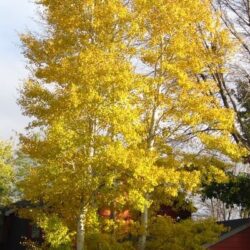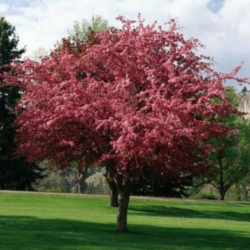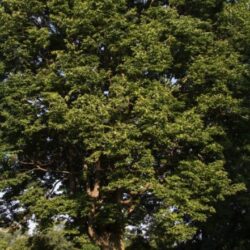Description
Key Facts:
Scientific Name: Populus balsamifera
Common Name: Balsam Poplar, Balm of Gilead, Tacamahac
Family: Salicaceae
Height: 50-80 feet at maturity
Spread: 30-50 feet
Leaf Shape: Ovate to lance-shaped with finely serrated edges
Bark Color: Gray to brown, smooth when young, becoming deeply furrowed with age
Fall Foliage Color: Yellow
Growth Habit: Upright, pyramidal to rounded crown
Sunlight: Full sun
Soil Preference: Prefers moist, well-drained soils; tolerates wet conditions and clay soils
Water Needs: Requires ample moisture, especially in lowland and riparian areas
Cold Hardiness: Hardy in USDA zones 2-7
Wildlife Value: Provides habitat and food for a variety of wildlife, including birds, mammals, and insects
Pest and Disease Resistance: Can be susceptible to leaf rust, cankers, and aphids
Notable Features:
Fragrant Buds: The sticky, resinous buds of the Balsam Poplar exude a strong, pleasant fragrance and have been used in traditional medicine to treat wounds and respiratory conditions.
Fast Growth: The Balsam Poplar is a rapidly growing tree, making it suitable for reforestation projects, erosion control, and as a windbreak in colder climates.
Tolerates Extreme Cold: This tree is highly adaptable to cold, making it one of the few trees that can thrive in the northernmost parts of North America.
Why You Will Love Balsam Poplar:
Balsam Poplar is a remarkable tree for cold climates and wet areas, bringing a combination of fast growth, wildlife support, and seasonal interest. Its fragrant buds and bright yellow fall color make it a striking addition to riparian and woodland landscapes.





